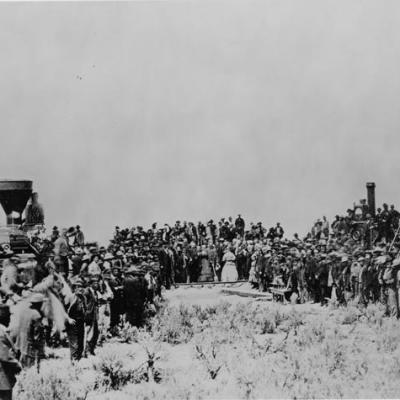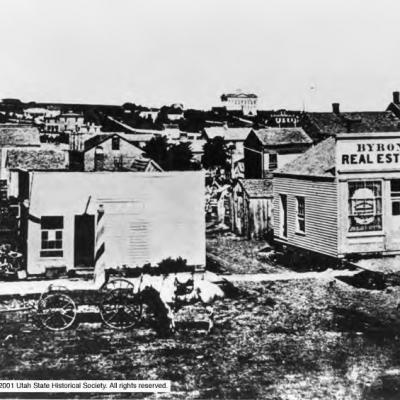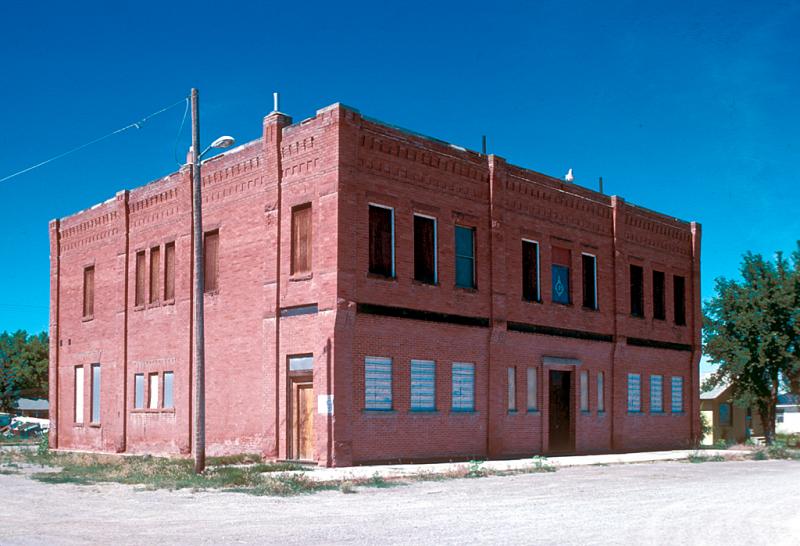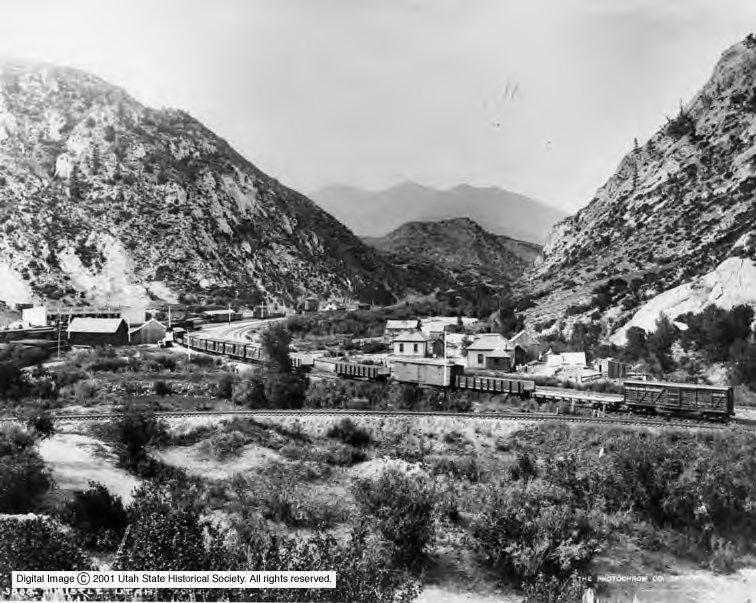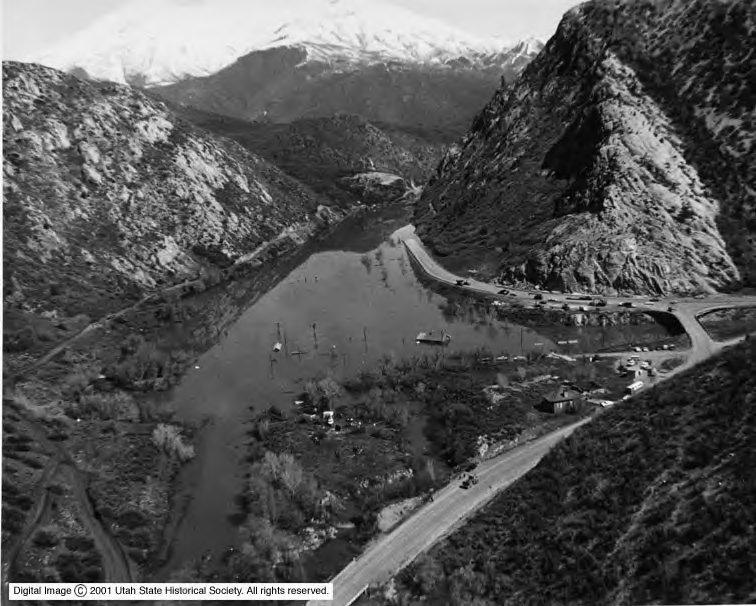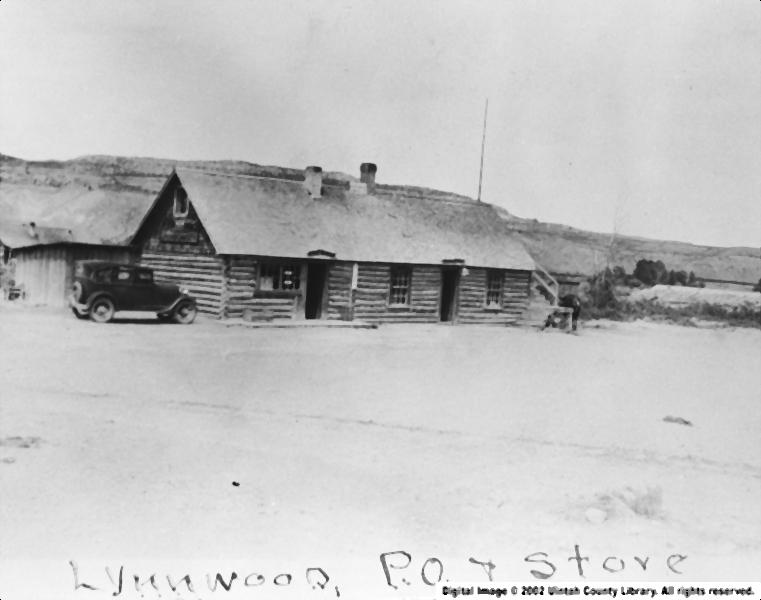Railroad
The coming of the railroad in 1869 led to the establishment of towns that provided services for the trains and served as shipping points. A prime example is Promontory, where the transcontinental line was completed in 1869. The town that sprang up there was later abandoned when the main line was rerouted to a causeway built across the Great Salt Lake.
Corinne was a town established along the Union Pacific railroad to become a leading freight-and-transfer station for the region. It was built by non-Mormons to avoid the ban that Brigham Young placed on Church members patronizing Gentile establishments. Or, as historian Brigham D. Madsen wrote, to "break the economic and political monopoly held by the Mormons in the Utah Territory." It boomed for a decade as Utah’s “Gentile capitol,” until Young built a rail line from Ogden to Idaho and sold it to Union Pacific. Ogden became the junction city, and Corinne faded, to become a typical small Mormon town. Abandoned buildings of its glory days remain, and some have been revived for other uses.
And then there was Thistle, a small railroad village in Spanish Fork Canyon. A landslide in 1983 dammed the river and flooded the town. Though the temporary lake is gone, so is the town.
Other circumstances related to a townsite may lead to its abandonment. The small community of Linwood, Utah, sat on what became the bed of the Flaming Gorge Reservoir, created after the completion of a dam in 1964. A similar fate overtook Saint Thomas, Nevada, when Hoover Dam created Lake Mead in the 1930s.

